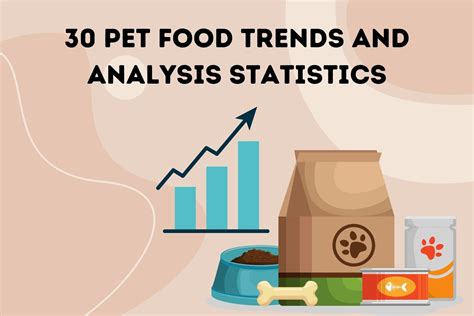Introduction

In an era marked by heightened awareness of pet health and well-being, the demand for homemade pet food is soaring. Pet owners are increasingly seeking healthier, more nutritious alternatives to commercially produced pet foods, leading to a surge in homemade pet food trends. This article provides a comprehensive overview of the latest trends, insights, and best practices in homemade pet food preparation for 2025 and beyond.
The Rise of Natural and Unprocessed Ingredients
Consumers are prioritizing the use of natural, unprocessed ingredients in their own diets and are extending this trend to their pets. Homemade pet food offers the opportunity to control the ingredients used, ensuring that pets are consuming wholesome, minimally processed foods. This trend is expected to continue as pet owners become more educated about the benefits of a whole-food diet for their furry companions.
Personalized Pet Nutrition
Just as tailored nutrition is becoming increasingly common for humans, pet owners are recognizing the importance of personalized nutrition for their pets. Homemade pet food allows for customization based on a pet’s unique dietary needs, age, breed, and health conditions. By understanding their pet’s specific needs, pet owners can create tailored recipes that provide optimal nutrition and support overall well-being.
Focus on Fresh and Local Ingredients
The farm-to-table movement is influencing the pet food industry, with pet owners seeking fresh, locally sourced ingredients for their homemade pet food. Farmers markets and local butchers offer access to high-quality, seasonal ingredients that provide pets with a diet rich in nutrients and flavor. Supporting local businesses also fosters community ties and contributes to a sustainable food system.
Meal Variety and Rotation
To ensure a balanced and diverse diet, pet owners are experimenting with meal variety and rotation. This involves offering different homemade recipes or combining different ingredients to create a variety of flavors and textures. Meal rotation helps prevent nutritional deficiencies and ensures that pets are getting the full spectrum of nutrients they need.
Convenience and Time-Saving Techniques
While homemade pet food offers numerous benefits, it can sometimes be time-consuming to prepare. To address this, pet owners are embracing time-saving techniques. Batch cooking and freezing portions in advance allows for quick and easy meal preparation. Slow cookers and pressure cookers also simplify the cooking process, making homemade pet food more accessible for busy pet owners.
Tips for Preparing Homemade Pet Food
1. Consult with a Veterinary Nutritionist: Always consult with a qualified veterinary nutritionist before making any significant changes to your pet’s diet. They can provide personalized guidance and help ensure that your homemade recipes are nutritionally balanced.
2. Use High-Quality Ingredients: Choose fresh, unprocessed ingredients from reputable sources. Avoid using leftovers or table scraps, as these may not be suitable for pets.
3. Cook Thoroughly: Meat and poultry should be cooked thoroughly to kill bacteria. Cook vegetables until they are soft and easy to digest.
4. Avoid Certain Foods: Some foods, such as onions, garlic, avocado, and grapes, can be toxic to pets. Be sure to research and avoid ingredients that are harmful to your pet.
5. Store Properly: Homemade pet food should be stored properly in the refrigerator or freezer to prevent spoilage and bacterial growth.
1. Improved Health and Well-being: Homemade pet food provides numerous health benefits, including improved digestion, skin health, and immune function. By controlling the ingredients, pet owners can avoid common allergens and sensitivities that can impact their pet’s well-being.
2. Reduced Risk of Chronic Diseases: A diet rich in whole, unprocessed foods has been associated with a reduced risk of chronic diseases, such as obesity, heart disease, and cancer. Homemade pet food offers a way to provide a nutrient-rich diet that supports long-term health.
3. Enhanced Bond Between Pet and Owner: The act of preparing and feeding homemade pet food can strengthen the bond between pet and owner. It shows that you care about your pet’s health and well-being, and it provides a unique opportunity to interact with your pet in a meaningful way.
4. Cost Savings: While homemade pet food can sometimes be more expensive than commercial pet foods, it can actually save money in the long run. By preparing larger batches and freezing portions, pet owners can save time and money while ensuring their pet’s nutritional needs are met.
The homemade pet food trend is a testament to the growing desire for healthier, more personalized pet nutrition. By embracing natural, unprocessed ingredients, meal variety, and time-saving techniques, pet owners can provide their furry companions with optimal nutrition and support their overall well-being. As we move into 2025 and beyond, the demand for homemade pet food is expected to continue to soar, driven by the desire for a more holistic and sustainable approach to pet health and nutrition.





















